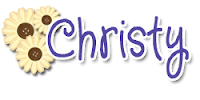I thought I'd take the chance a share a few of the things I learned over the two day event. The first session I attended was probably my favorite and was put on by Anita Archer, Ph.D.
If you have not heard of her, you really need to checkout her books, clips from YouTube and free handouts from past workshops through MiBLSi. A former teacher of 47 years, she brought a lot of pizazz to the presentation. Although, the presentation was geared for K-2 many of the ideas presented were great for my small MTSS intervention groups.
The critical foundation skills are: phonological awareness, phonics/word recognition, and fluency.
Phonological awareness is understanding oral language can be broken down into smaller components.
- Sentences to words
- Words to syllables
- Words into on-set rimes
- Words into phonemes
How to Incorporate:
- Kindergarten 10-15 minutes a day, could be done throughout the day.
- Working on syllables could be done by playing the "name game." It's a good way to work on syllables and learn about one another.
- Blending and segmenting can be done throughout the day. Have students listen while they are lined up for lunch, give them a word to blend together... maybe where your headed or an object around the room.
- First grade 10 minutes a day incorporated into phonics instruction.
- All elementary grades should incorporate phonemic awareness into spelling.
- Few in number. 2-3 activities done often.
- Explicitly modeled. Don't commit "assume-aside"
- Supported by concrete materials or gestures.
- Designed to include all students.
Blending Sounds into Words
- We're going ot play a say-the-word game. I'll say the sounds. You say the word.
- Listen. aaaaammmm
- What word? am
- (Repeat with other words.)
- (If time permits, check individual students)
There are two types of segmenting: smooth and separate.
Segmenting Words into Sounds--- Smooth Segmenting
- Put your fists together.
- Get ready to stretch the word.
- The word is fin. What word? fin
- Stretch it. fffiiiiinnnn (pull fists apart)
- Shrink it. fin (bring fists together)
- If time permits, check individual students.)
- We're going to say the sounds in a word.
- Fist in the air. Put up one finger for each sound.
- The word is sat. What word? sat
- First sound? /sss/ Next sound? /aaa/ Last sound? /t/
- If time permits, check individual students.
A lot of information for a Sunday, it may not be the most applicable for all of my upper elementary friends; however, I teach an intervention group that I think I could use some of these activities and skill work in throughout our intervention times.
For topics less brain draining and more fun... my BBB Jivey, is having a MASSIVE giveaway. Click the picture below to have 5 chances to win some amazing products and items.

















No comments
I love comments! I also like to reply by email (so you can see my response). Please make sure that option is turned on in your profile settings so you can see my reply or leave your email address here! Thanks again for taking time to comment!!